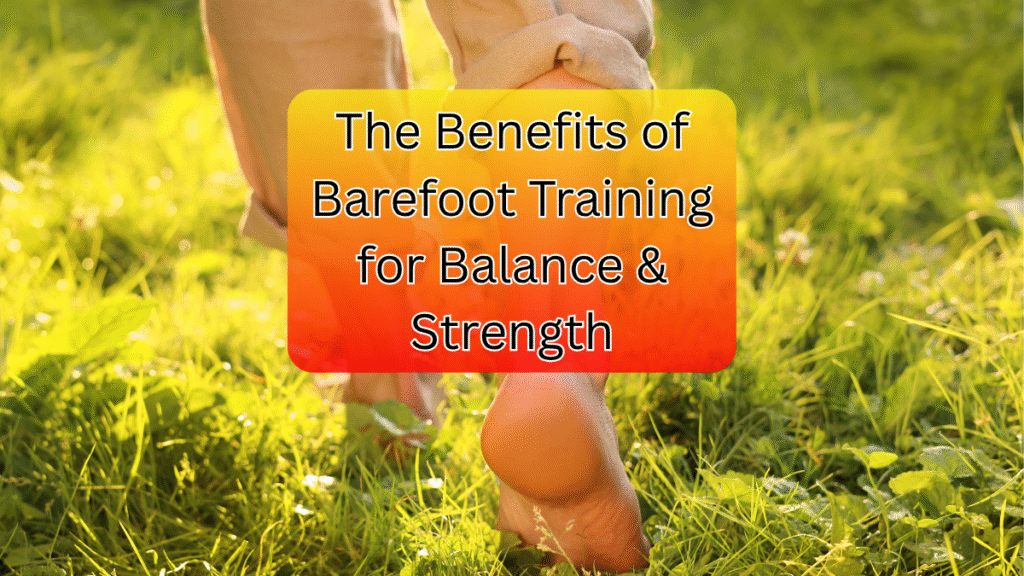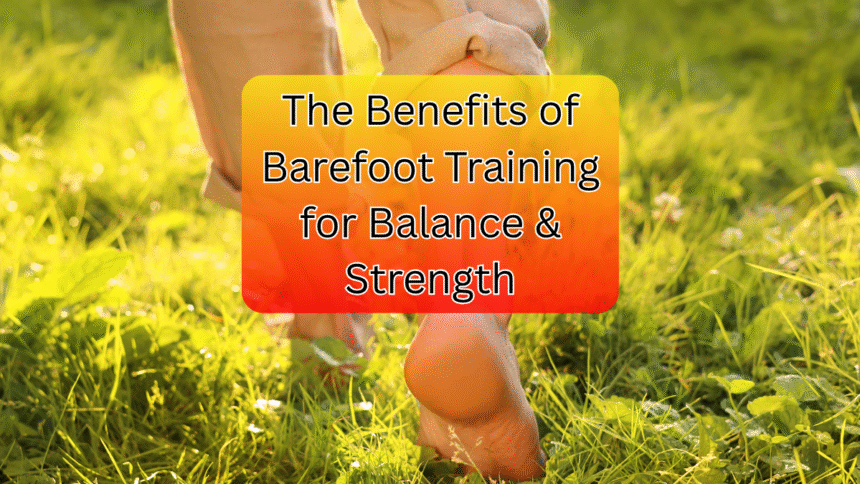Barefoot Training
Have you ever noticed how free and natural it feels to walk barefoot on grass or sand? There’s a reason for that—our feet are designed to move without restrictive shoes. Barefoot training is gaining popularity among athletes, fitness enthusiasts, and even everyday people looking to improve their balance, strength, and overall movement quality.
In this post, we’ll explore the science-backed benefits of barefoot training, how it enhances stability and power, and practical tips to get started safely. Whether you’re a runner, lifter, or just someone who wants to move better, going shoeless might be the missing piece in your fitness routine.

Why Barefoot Training? The Science Behind It
For centuries, humans walked, ran, and trained without shoes. Modern footwear, while protective, often weakens the small muscles in our feet, alters our natural gait, and reduces sensory feedback from the ground. Barefoot training helps reconnect us with our natural movement patterns, leading to several key benefits:
1. Improved Balance & Proprioception
Proprioception—the body’s ability to sense its position in space—relies heavily on feedback from the feet. Shoes dampen this feedback, while barefoot training enhances it.
- Stronger foot arches: Walking or exercising barefoot strengthens the intrinsic foot muscles, improving stability.
- Better reaction time: Without cushioning, your body learns to adapt to surfaces faster, reducing the risk of falls.
- Enhanced neuromuscular control: Studies show that barefoot training improves balance in athletes and older adults alike (source).
2. Increased Strength & Muscle Activation
When you ditch the shoes, your feet, ankles, and lower legs work harder.
- Stronger calves & ankles: Running or lifting barefoot engages these muscles more than when wearing supportive shoes.
- Better squat & deadlift form: Without an elevated heel, you’re forced to use proper mechanics, leading to stronger glutes and hamstrings.
- Activation of smaller stabilizers: Tiny muscles in the feet (like the plantar fascia) get a workout, reducing the risk of injuries like plantar fasciitis.
3. Natural Gait Correction
Many running injuries stem from poor form—heel striking, overstriding, or excessive pronation. Barefoot running encourages:
- Forefoot or midfoot striking: Reduces impact on joints.
- Shorter, quicker strides: Promotes efficiency and speed.
- Better posture: Aligns the spine naturally by eliminating heel elevation.
4. Reduced Risk of Foot Problems
Wearing tight or overly cushioned shoes can lead to:
- Bunions & hammertoes (from toe crowding)
- Weak arches & flat feet (from lack of muscle engagement)
- Achilles tightness (from elevated heels)
Barefoot training helps reverse these issues by allowing the feet to splay naturally and strengthen over time.
Video Credits
How to Start Barefoot Training Safely
If you’ve spent years in supportive shoes, transitioning too quickly can lead to soreness or injury. Follow these tips to ease into barefoot training:
1. Start Slow
- Begin with short walks indoors or on soft surfaces (grass, sand).
- Gradually increase time and intensity over weeks.
2. Strengthen Your Feet First
Try these exercises to prep your feet:
- Toe spreads & curls (improve toe mobility)
- Heel walks & toe walks (strengthen arches)
- Single-leg balances (boost proprioception)
3. Choose the Right Surfaces
- Grass & sand: Great for beginners (soft & forgiving).
- Hardwood or gym floors: Ideal for strength training.
- Avoid concrete at first—it’s harsh on unconditioned feet.
4. Use Minimalist Shoes as a Transition
If going fully barefoot feels uncomfortable, try minimalist shoes (like Vibram FiveFingers or Xero Shoes) that mimic barefoot movement.
5. Listen to Your Body
- If you feel sharp pain (not just muscle soreness), take a break.
- Stretch calves and feet regularly to avoid stiffness.
Who Should (and Shouldn’t) Try Barefoot Training?
Ideal For:
- Runners looking to improve form
- Lifters wanting better stability
- People with weak arches or balance issues
- Anyone seeking a more natural movement experience
Use Caution If:
- You have severe foot conditions (consult a podiatrist first).
- You’re diabetic (risk of unnoticed injuries).
- You train on rough or hazardous terrain.
Final Thoughts: Is Barefoot Training Worth It?
The benefits of barefoot training—better balance, stronger feet, and improved movement mechanics—are hard to ignore. While it’s not a one-size-fits-all solution, incorporating even short barefoot sessions into your routine can lead to long-term gains in strength and mobility.
Ready to give it a try? Start with a 10-minute barefoot walk today and see how your body responds. Share your experience in the comments—we’d love to hear how it goes!











